When me and my wife were in Korea after our wedding for our honeymoon we stumbled upon a pop culture art exhibit at the LOTTE World Tower in Seoul, specifically in the LOTTE Museum of Art. That exhibit housed the art work of Kenny Scharf and it was this incidental find that ended up resulting in quite a joyous experience. Kenny's exploration of pop culture concepts through art, especially his pieces telling stories with the Jetsons and Flinstones, really spoke to me for a variety of reasons that we'll explore in this post.
First, let's explore how Kenny Scharf viewed his own work. "I love the Surrealists. I coined the term Pop Surrealism to describe my work. It suggests the Pop art is my unconscious. It's like being a surrealist painter, but the imagery created is all Pop imagery. I look at myself as the child of what Andy Warhol was all about. He was painting what was around him at the time. But since I grew up in the 60s, I was living Pop. Pop was my world. It was inside of me. Over time it became a part of my subconscious, and now it's filtering into my paintings."
This exhibitions was the first ever grand scale exhibition of Kenny Scharf's work. Kenny was known for incorporating social messages through animated characters in science fiction settings. Kenny Scharf carried on the legacy of Warhol in important ways and we were lucky enough to see over 100 of his paintings, videos, and sculptures. My favorite group of work was entitled "The Jetstones". It portrays the distant past of The Flinstones and the futurism of The Jetsons as an escape from the ugly realities of the present. And I have to be honest, part of the works appeal was that I grew up on a healthy diet of both shows growing up. I recognize that nostalgia is a hell of a drug and probably had an influence of the works power over me.
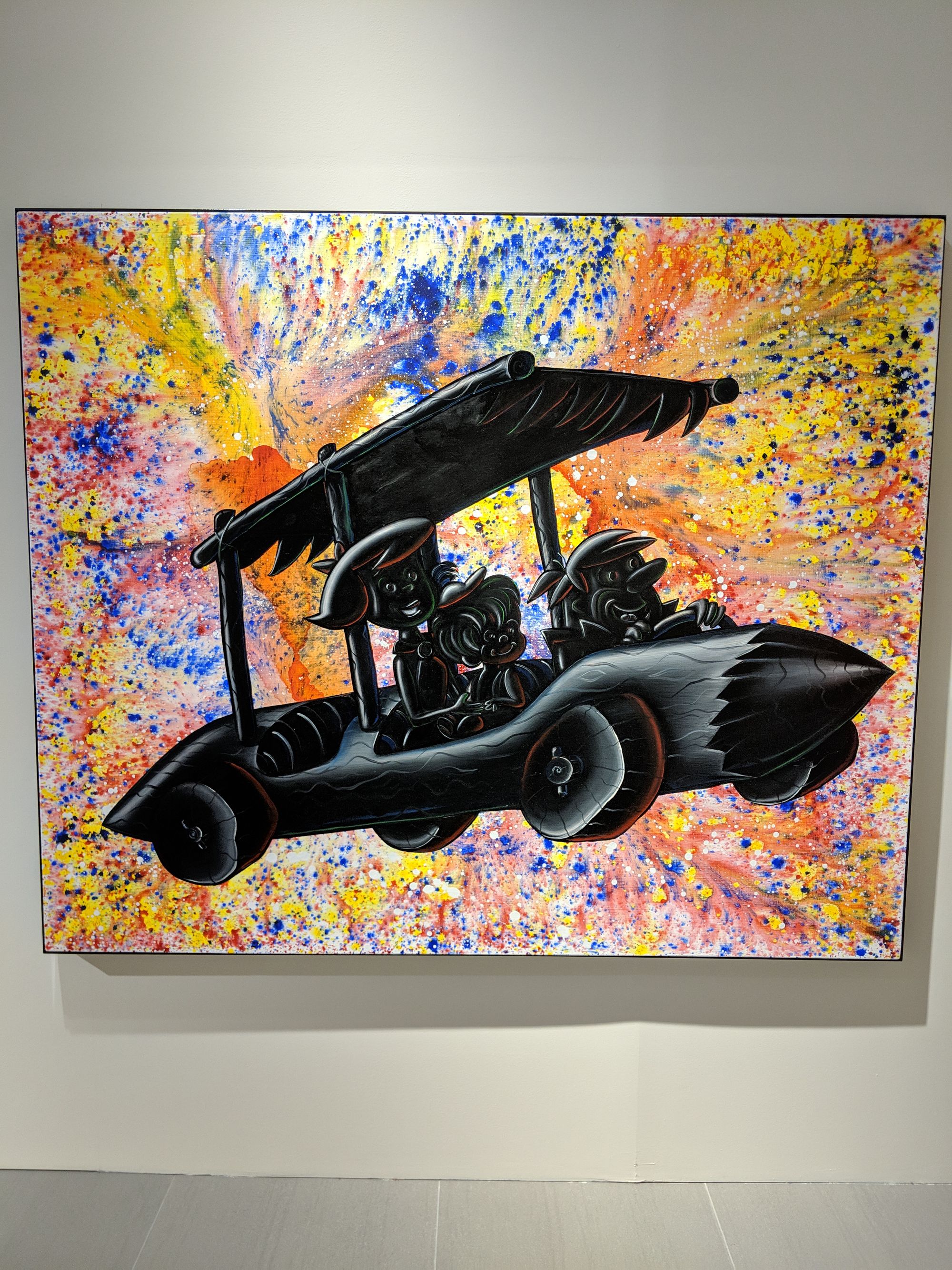
It is important to note the historical context that gives light to what Scharf's generation was facing. Economic recession, the Cold War, the Space Race and the global apocalyptic threats of nuclear war and AIDS. This historical backdrop produced a great anxiety about reality and in particular the reality that was being sold to the US consumer. I'll discuss more of the critiques of consumerism that we saw in his work but for now it enough to note that Scharf's works can be viewed as a manifestation of the anxieties of the cultural mainstream as they were confronted with the realities of the day.
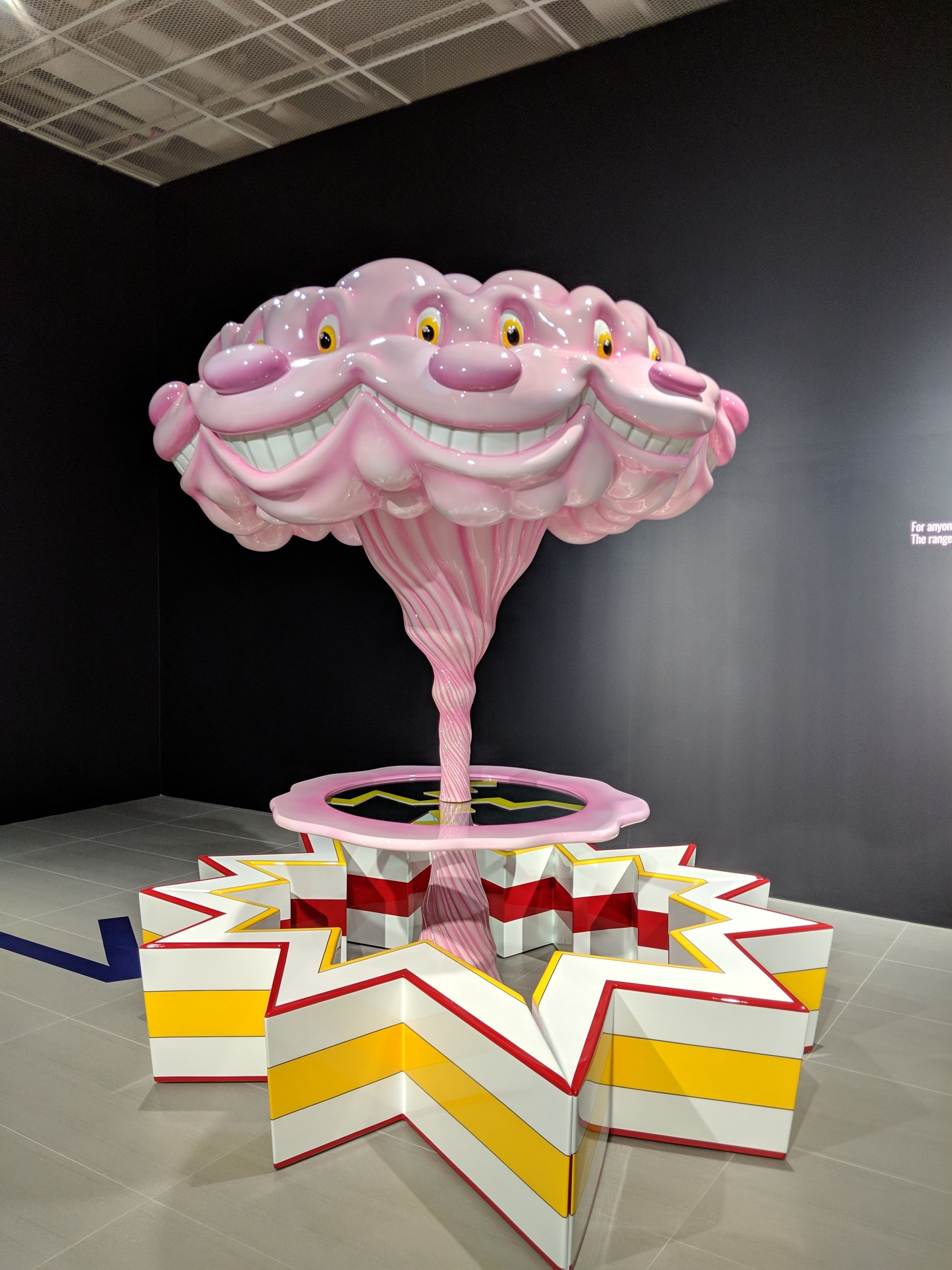
In addition, to the historical backdrop and the anxiety this produced in Scharf and his generation, what spoke to me about the Jetstones work was its commentary on time and the whole reason for the subject of the work being focused on The Jetsons and The Flinstones. This piece, in particular, was illustrative of how the pieces spoke to me about the power of time when it comes to our viewpoint on reality.
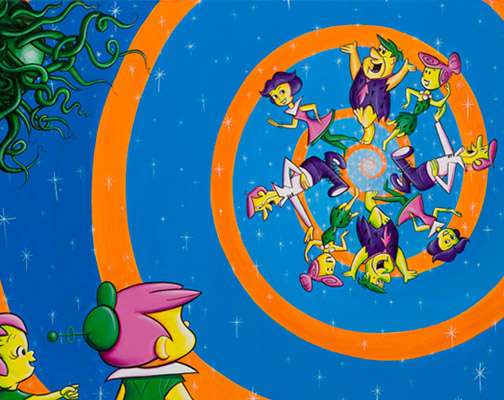
We often view time as a linear progression between the past and the present; therefore, it is illogical that the Flinstone family and the Jetson family would be able to coexist in the same timeline. However, that is not how time operates and I believe Scharf is illustrating that for us in this piece. First, I look at the green creature in the top left of the painting. It has all these jumbled tentacles and is looking upon this scene as well. It could just represent another life-form also coexisting in this painting or it could represent the much more jumbled outlook on how time operates where all moments co-exist at the same time, not as linear progression, but as point in time snapshots. It is just a person's perception of how those pieces are put together that reflects their view of time - hence why humans perceive time linearly. Then there are the orange cocentric rings against the backdrop of space. They represent, in my view, the view of time that is much more circular than we generally perceive and that it is totally possible to imagine a view of reality in which the past and future can co-exist with each other and our present. Last, you have the visual representation of unity in the parents from The Jetsons and The Flinstones alternating along with the orange cocentric rings. They exist together in a unity between the past and the future.
In addition, to the Jetsones group of paintings, Kenny Scharf's paintings explored a number of other themes that I thought were interesting to comment on but before we get to those, I want to go through some quotes of Scharf's that were present in the exhibit that I think point to some interesting perspective on art and human life that we can all learn from.
- Innovate against the norm; creativity and innovation come when you are having fun and intentional in you letting things in your reality speak to you. "I thought it would be the answer to boring useless art. Here was art that was fun, improved your life and was in constant use."
- Make art a part of your everyday life; think outside of what you think your reality is. The first step to changing reality is believing that a world outside the present exists. "I really feel that art should be part of everyday life and everyone's life, and not just something separate devoted to a gallery or museum wall. I wish more people would get excited about art's potential to bring us out of the mundane, boring world that we all just accept and don't reach beyond."
- Art is everywhere and when you make art a part of your everyday life you can foster a spirit of rebellion; for a rebellious spirit encourages you to look for ways to innovate, to change the status quo and your current reality. "One of the things about art, for me, is a spirit of rebellion." "Rules were meant to be broken, especially in art."
So looking past these comments from Kenny Scharf on art and life, I thought he had a few other pieces of art that really spoke to me. I've shared a gallery of some of these images below. These pieces explored a variety of concepts. His work on donuts and hot dogs represented his belief that hot dogs and donuts were the most pure symbol of the destructive and circular powers of capitalism's drive. A work dedicated to the nation of Korea hosting his work and the dragons important to their culture was also featured. His work on faces was interesting as it explores concepts around a child's pureness, particularly with perception and how a child usually notices colors and faces when they first begin to perceive their reality. A room that looked like a child's imagination exploded in it ended the exhibition. All of these works of art evoked an emotional and intellectual response from me.
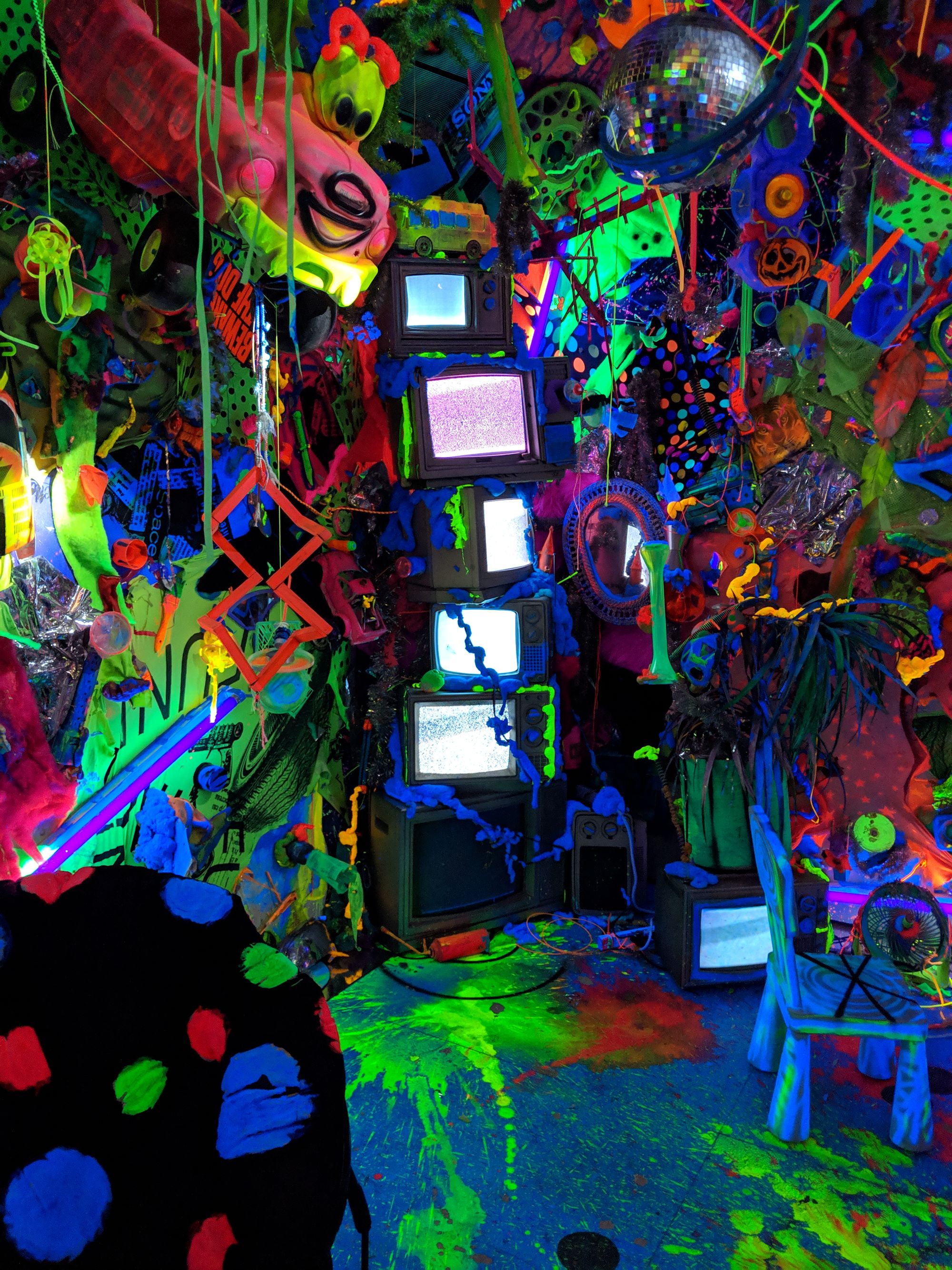
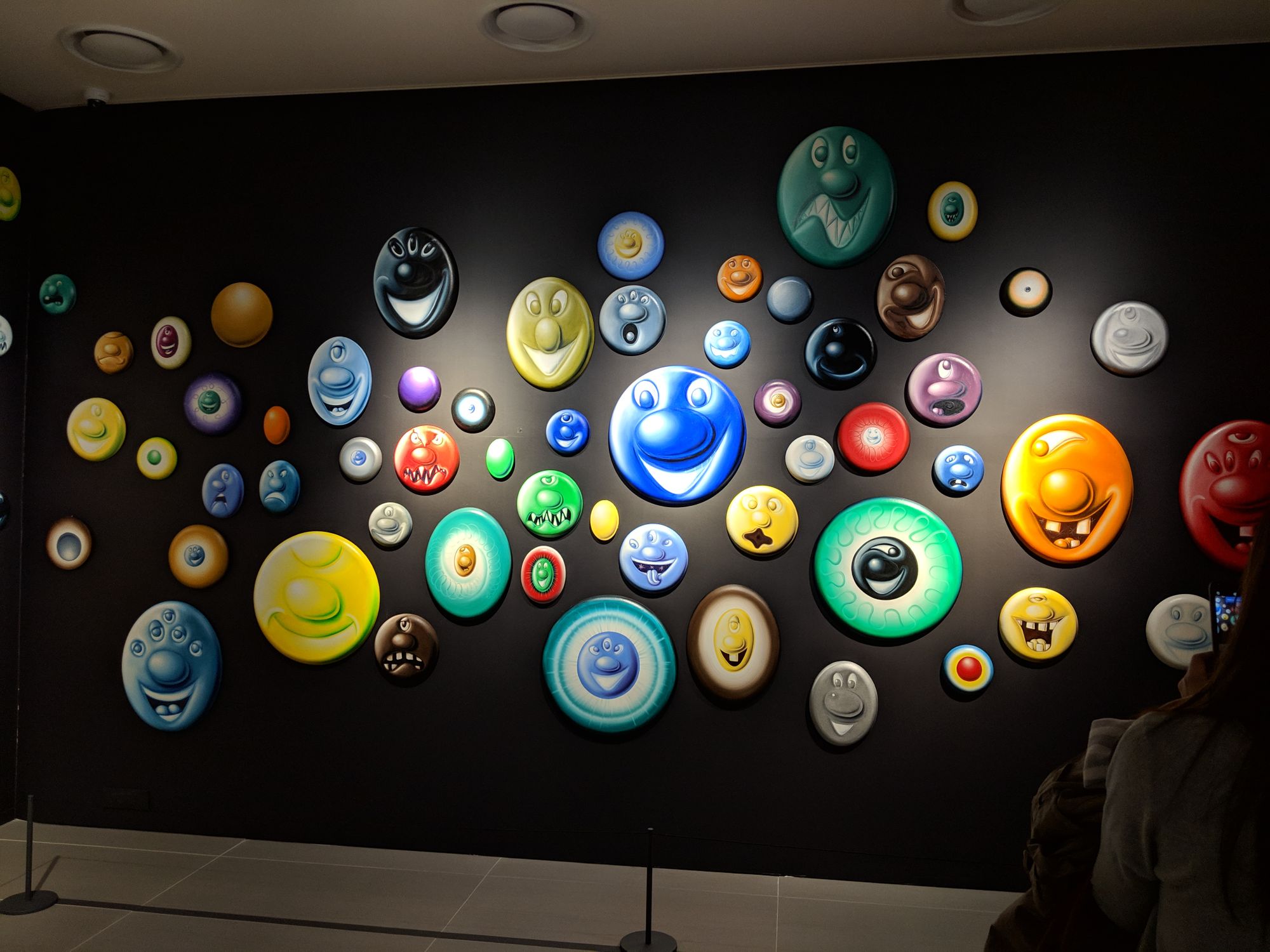
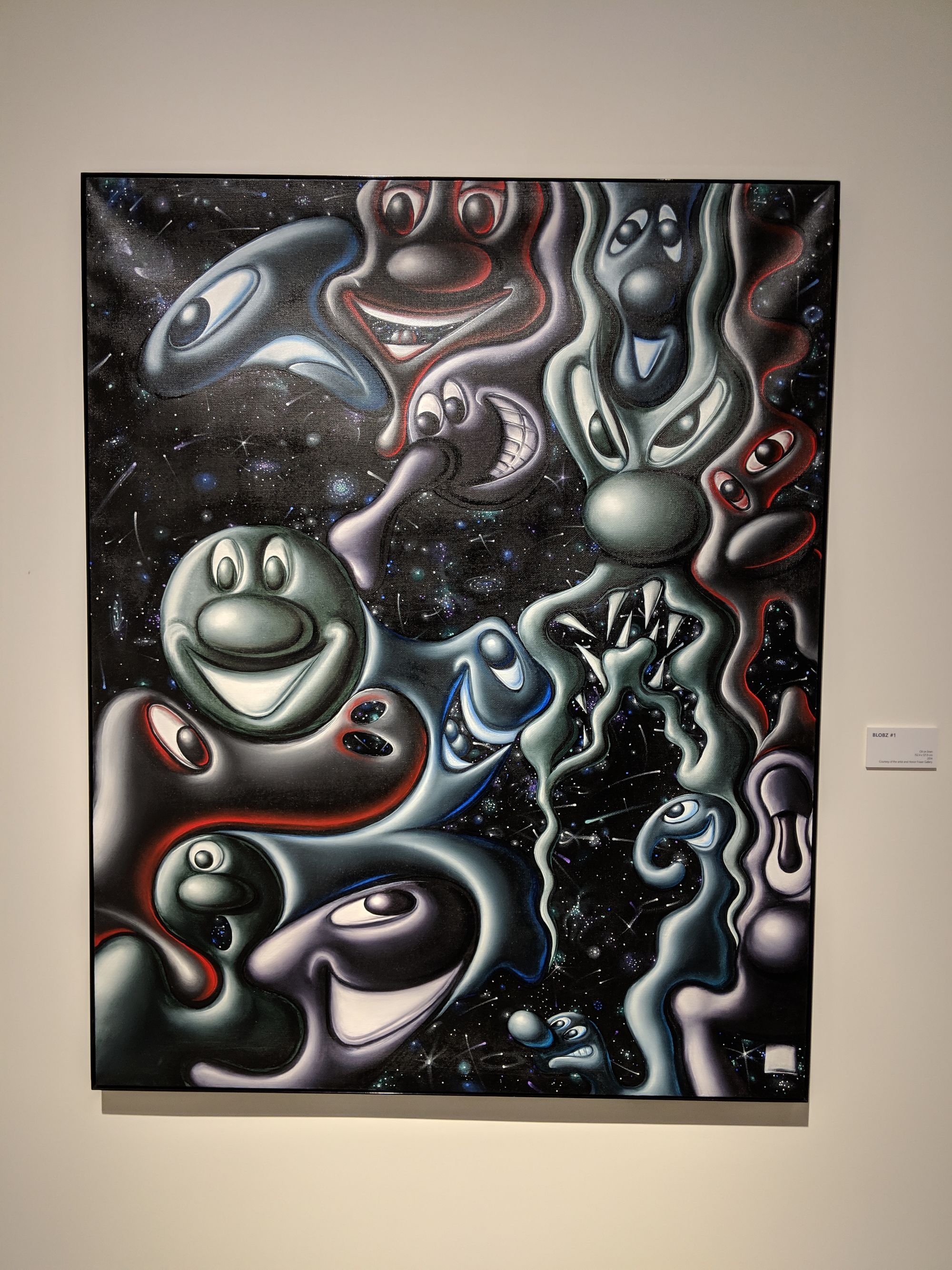
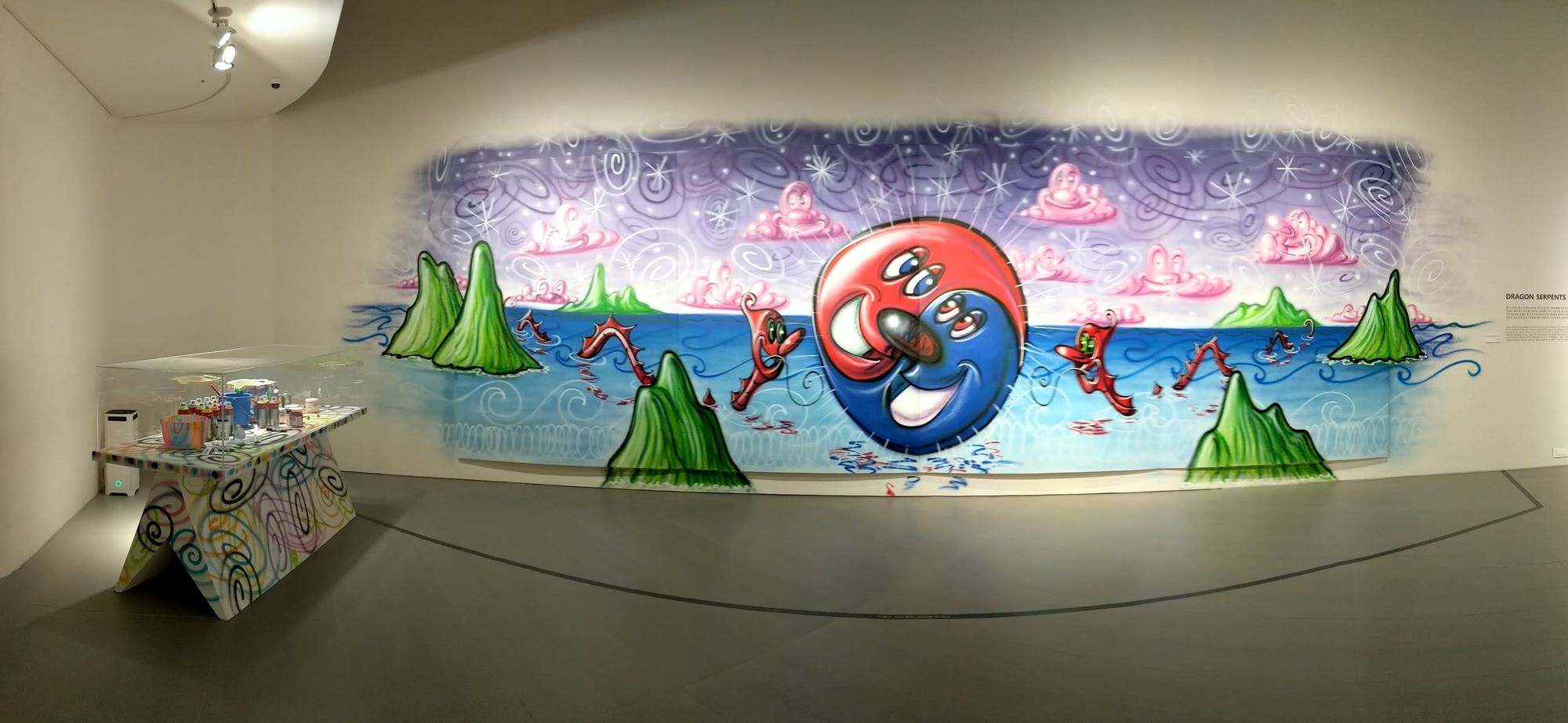
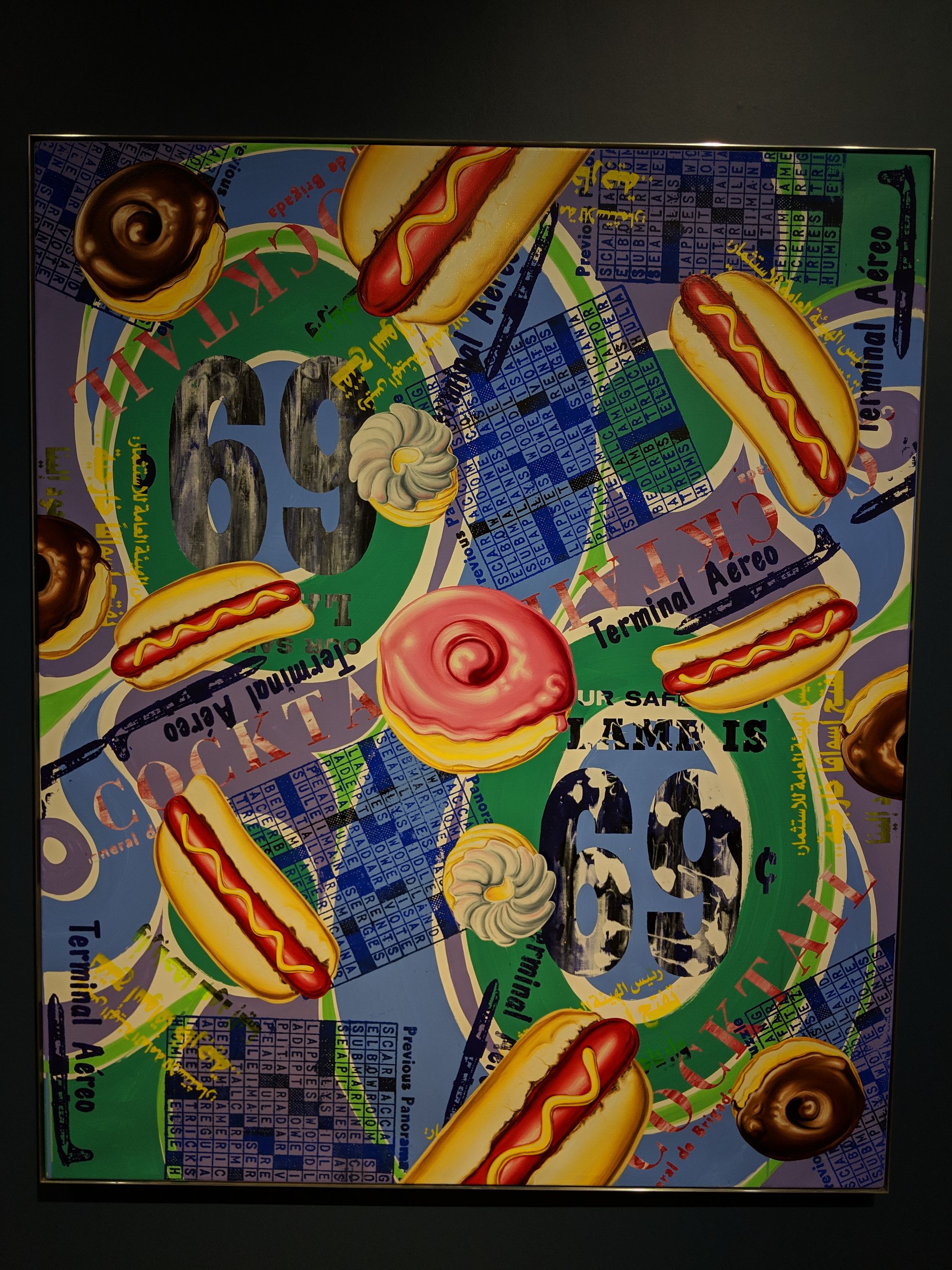
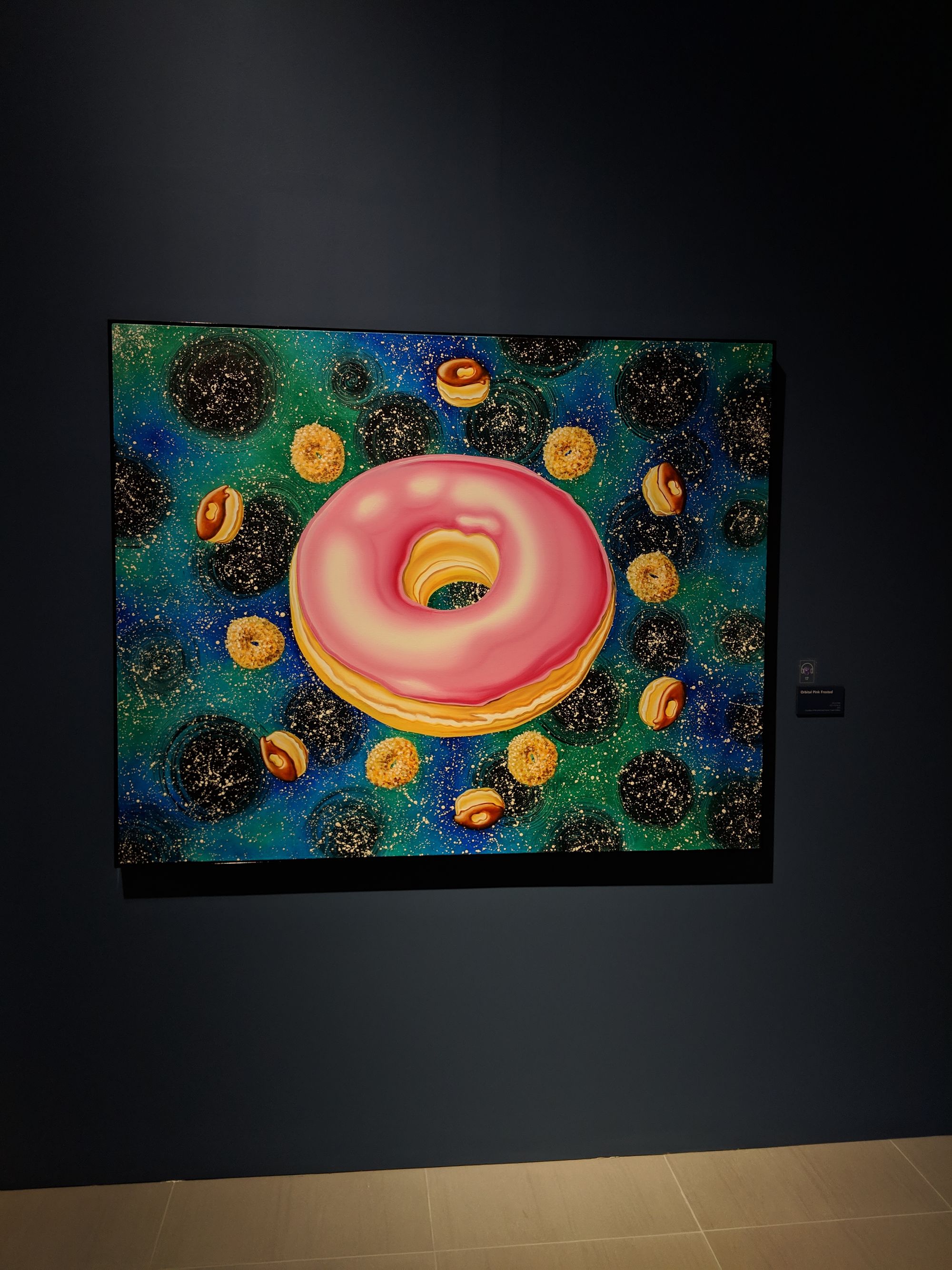
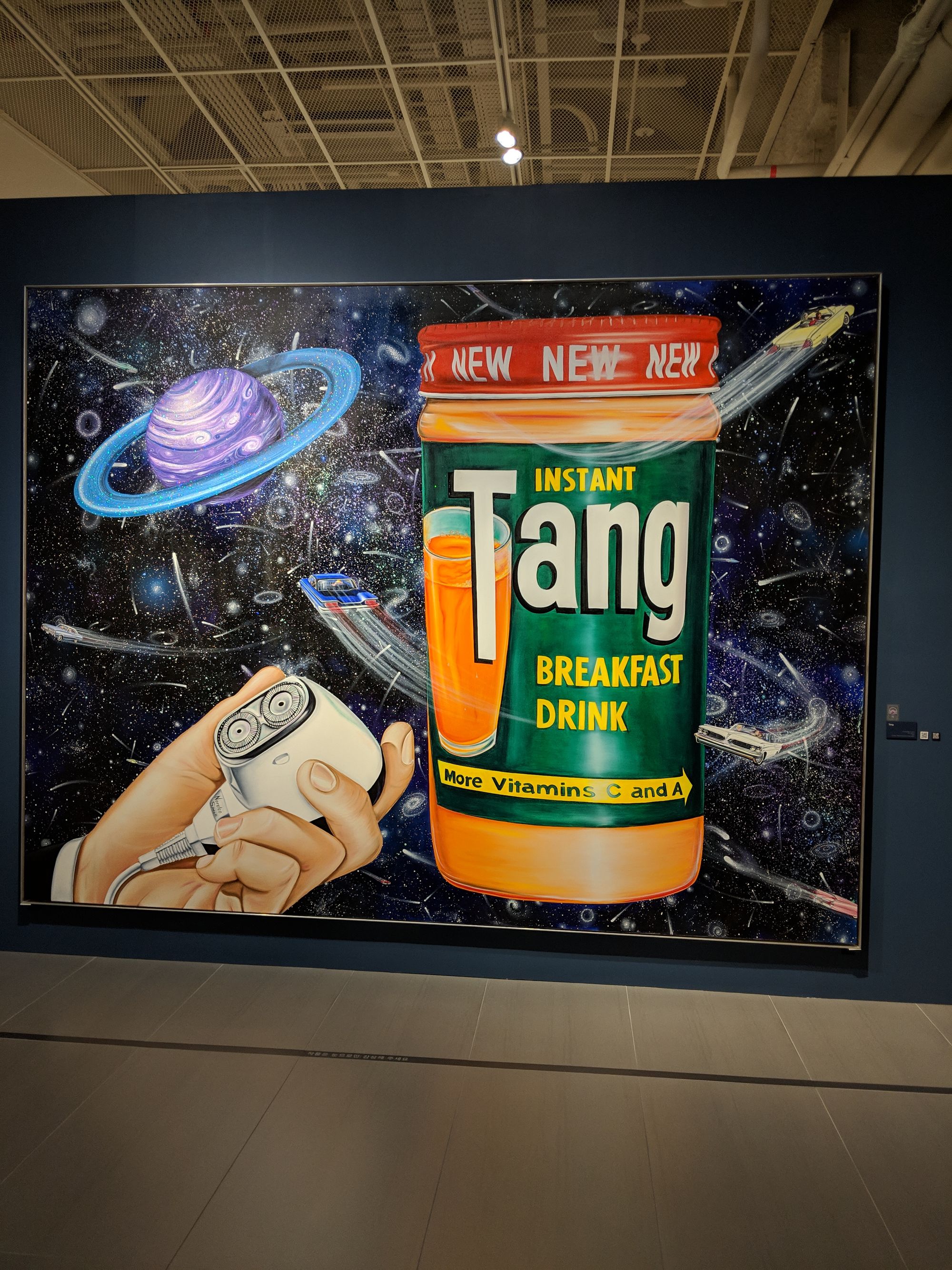
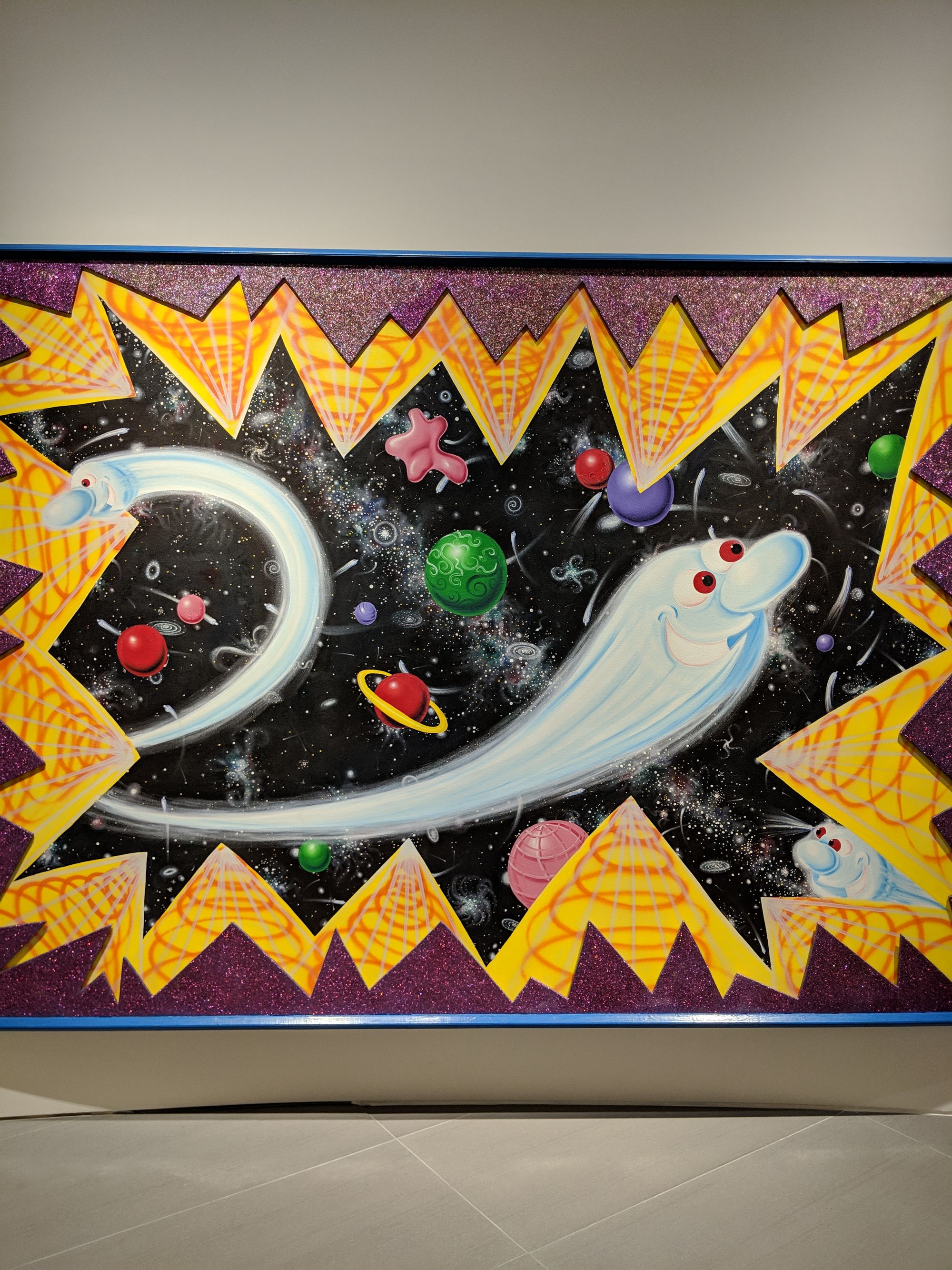
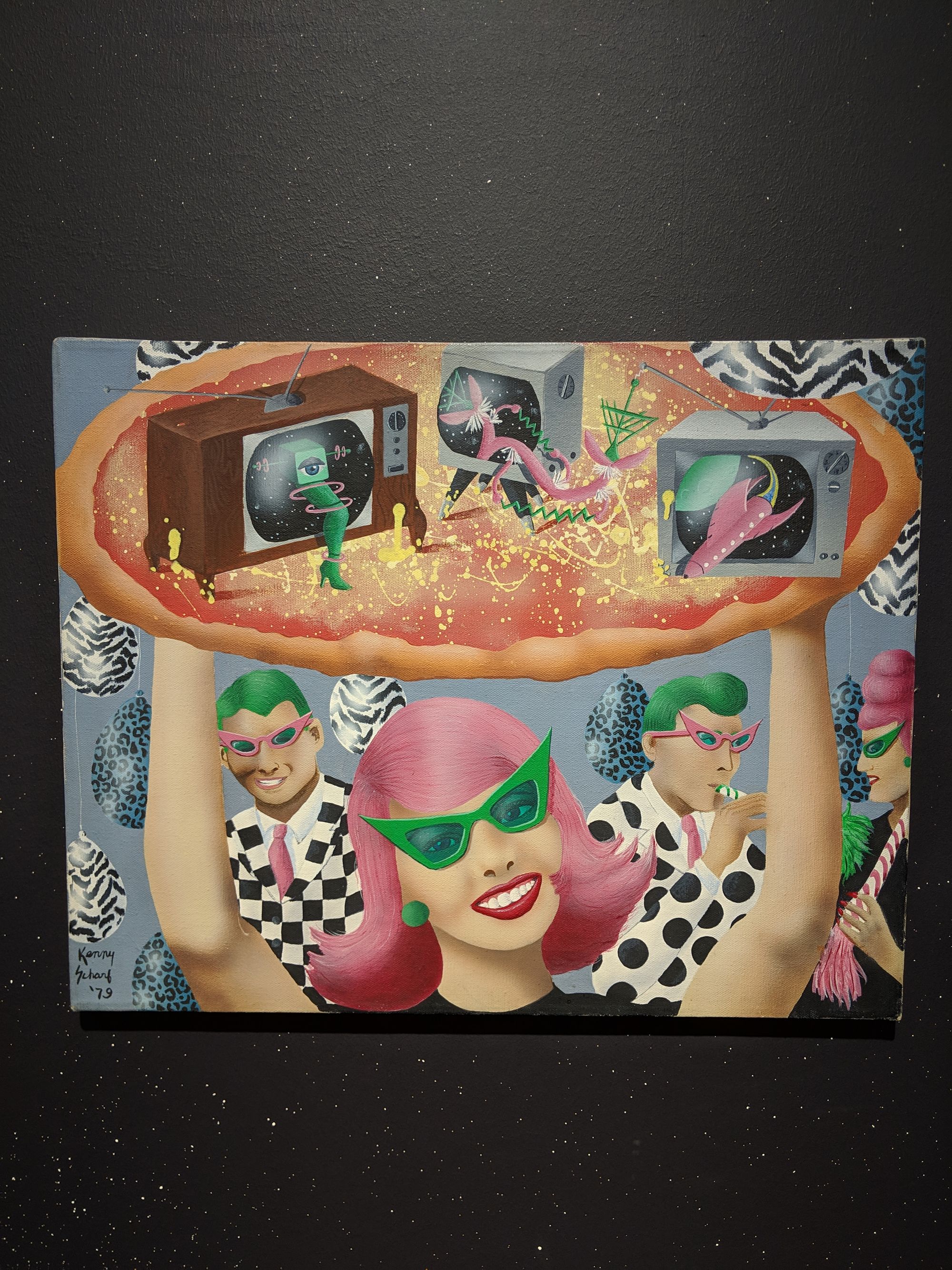
I would encourage anyone I meet to check out Kenny Scharf's work if they ever find themselves near one of his exhibits. His work is colorful, engaging, and speaks to subject that remind us of our own anxieties and how we should be questioning the realities that are being marketed to us in pop culture. I look forward to following his work for a long time and engaging with it in different mediums. What are your favorite pop culture artists and what do you think of Kenny Scharf's work? Leave your comments below.

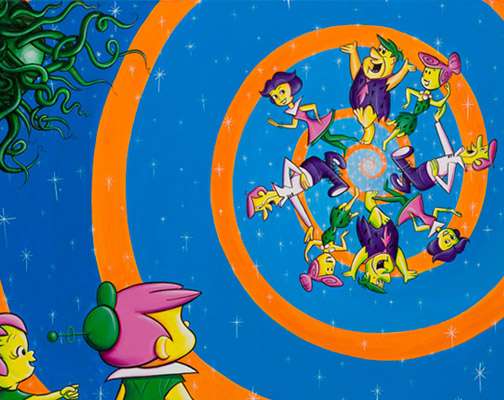




Comments